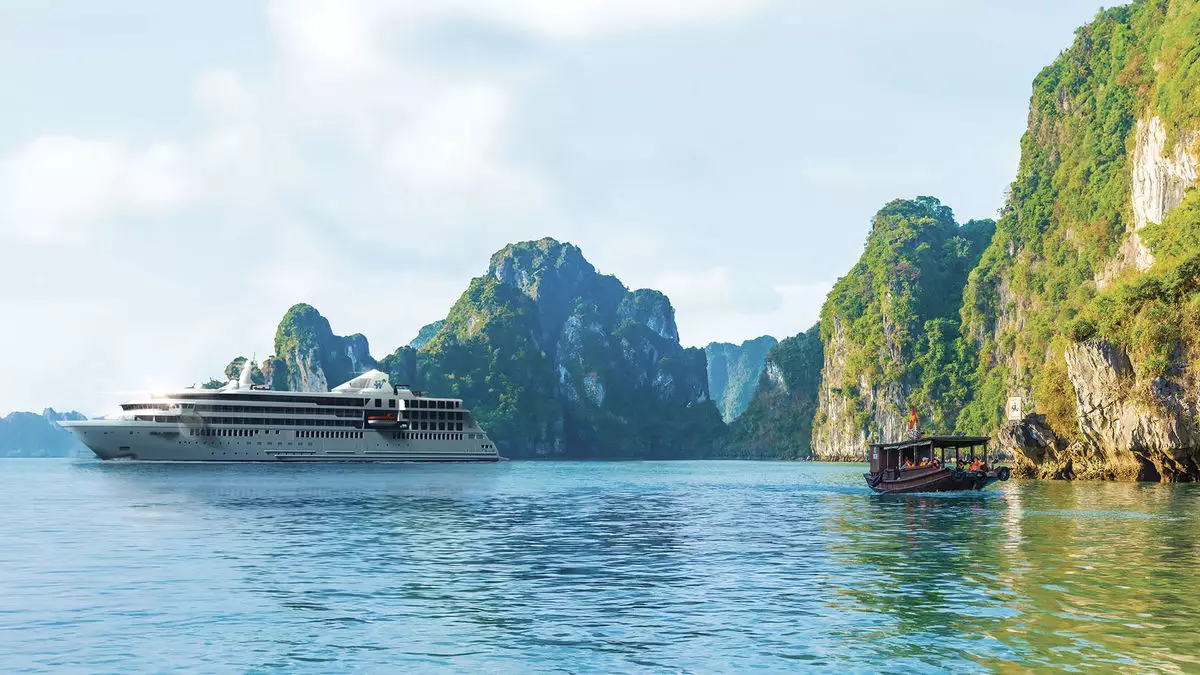“The White Lotus,” HBO’s critically acclaimed black comedy, intricately weaves tales of wealth, privilege, and interpersonal drama set against paradisiacal backdrops. The juxtaposition of the serene luxury of a resort and the dark complexities of human relationships captivates audiences, drawing them closer to the landscapes where the drama unfolds. Now, as the show’s much-anticipated third season premieres in the stunning locale of Thailand, cruise lines are strategizing to attract viewers to these exotic destinations. This synthesis of television drama and travel marketing hints at a transformative power that the entertainment industry possesses over tourism.
Leveraging Popular Culture for Travel Mobility
It’s not uncommon for popular media to influence travel trends, yet the specificity of how “The White Lotus” can optimize cruise itineraries presents a unique case study. Major cruise lines, such as Windstar and Norwegian Cruise Line, are seizing this moment to explicitly tie their offerings to the buzz generated from the show’s premiere. For instance, Windstar’s vice president, Dianna Rom, acknowledges the pattern where viewership translates into destination interest. With specialized itineraries focused on cultural immersion—from hidden markets to elephant sanctuaries—the cruise line aims not just to showcase Thailand, but to revere its richness through genuine experiences.
The timing is strategic; as social media buzz and discussions about the series skyrocket, the chance to encourage potential travelers hinges on their eagerness to step into the sets they admire on screen. The travel landscape is inherently responsive to such cultural phenomena, and now these cruise lines are not only part of the narrative but actively shaping it.
The Journey to Cultural Richness
The itineraries being crafted for exploration in Southeast Asia suggest an understanding that travel is no longer merely about locations; it is about the stories we become a part of. With ships like the Windstar Star Seeker allowing for unique docking capabilities, such as accessing Bangkok’s riverside through smaller vessel size, there’s an acknowledgment of the importance of adaptability and personalization in travel. The inclusion of pre- and post-cruise tours emphasizes that engagement should extend beyond the vessel, rooting travelers deeper into local cultures and communities.
In contrast, Norwegian Cruise Line proposes a different narrative pull by focusing on historical and natural marvels, epitomizing tours with visits to Thailand’s stunning Phi Phi Islands and ancient temples. There’s an implicit recognition that today’s travelers desire more than picturesque vistas—they yearn for fulfilling experiences that engage their senses and connect them to the essence of their destinations.
Data-Driven Insights on Travel Trends
Supporting this shift, travel insights reflect a burgeoning curiosity about Thailand, evidenced by a staggering increase in search interest regarding “Four Seasons Koh Samui,” a hotspot featured in “The White Lotus.” This 1,311% surge signifies not only a heightened awareness but the potential for tangible booking increases. Samuel Jefferies from Bokun aptly notes that the series’ return serves as an ideal platform to utilize the show’s popularity as leverage for real-world travel.
Yet, while the potential for increased traffic to Thailand looks promising, the onus remains on the cruise industry to create memorable experiences that resonate with the newfound interest. Will travelers choose to explore these destinations by sea effectively, or will the allure of luxury resorts create a diversion?
Challenges Ahead: Turning Interest into Action
As the convergence of luxury television with travel unfolds, it’s essential to recognize the challenges that remain. A significant disconnect can often exist between the fantasy presented onscreen and the realities of travel. For many, the depiction of a lavish lifestyle may deter them from the authentic experiences that exist beyond the screen. The challenge is, therefore, for these cruise lines to not only attract interest but to ensure that the experiences offered go beyond the superficial, instead encouraging deeper cultural connections that spark transformative journeys.
As “The White Lotus” influences cultural perceptions of travel, the cruise industry has a remarkable opportunity to engage travelers in ways that resonate emotionally and culturally. The success of this venture will depend on a clear understanding of audience expectations influenced by a luxury drama that has made its mark, illuminating how interconnected our worlds of entertainment and travel truly are.


Leave a Reply